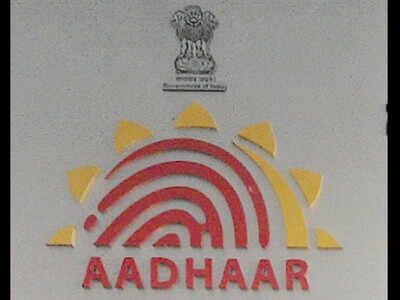
HYDERABAD: People die but their 12-digit Aadhaar number remains active, giving scope for misuse. Now, the Unique Identification Authority of India (UIDAI), the issuing authority, is planning to digitally bury the Aadhaar too once a person dies.
As of now, deaths do not get updated in Aadhaar database as there is no linkage between the death registry of the Registrar General of India and repositories of state government and UIDAI. For instance, Telangana has a different software than the one used by the Registrar General of India, leading to compatibility issues. Sources said UIDAI is now mulling a proposal to link death registration to Aadhaar.
“When a person dies, his Aadhaar number should become inactive. Currently, the kin of the deceased are not reporting the deaths to UIDAI. There is no linkage of death registries with Aadhaar,” a UIDAI official told TOI.
“The proposal to link death registration with Aadhaar is in a preliminary stage. If death registry and Aadhaar software are linked, whenever a person dies, it will show in our system. At present different states are using different softwares,” the UIDAI official said.
“Registrar General of India uses CRS software and Andhra Pradesh adopted it. Telangana uses Unified Birth and Death Registration Management Information System, while GHMC has its own application. We are working on software compatibility. This is in the primary stage,” he added.
States with CRS software have started death information linking, but they were using birth registration linkage to Aadhaar. “A just-born child can be enrolled in states such as Haryana and Andhra Pradesh for Aadhaar. Birth registration and Aadhaar linkage is available in a few states,” the official said.
As per UIDAI, Telangana has 99.9% Aadhaar saturatio and the projected population and Aadhaar enrolment for 2020 was 3.93 crore. In Andhra Pradesh, Aadhaar enrolment saturation was about 90%. Of the projected 5.3 crore population, 4.8 crore people had already enrolled for Aadhaar.
As of now, deaths do not get updated in Aadhaar database as there is no linkage between the death registry of the Registrar General of India and repositories of state government and UIDAI. For instance, Telangana has a different software than the one used by the Registrar General of India, leading to compatibility issues. Sources said UIDAI is now mulling a proposal to link death registration to Aadhaar.
“When a person dies, his Aadhaar number should become inactive. Currently, the kin of the deceased are not reporting the deaths to UIDAI. There is no linkage of death registries with Aadhaar,” a UIDAI official told TOI.
“The proposal to link death registration with Aadhaar is in a preliminary stage. If death registry and Aadhaar software are linked, whenever a person dies, it will show in our system. At present different states are using different softwares,” the UIDAI official said.
“Registrar General of India uses CRS software and Andhra Pradesh adopted it. Telangana uses Unified Birth and Death Registration Management Information System, while GHMC has its own application. We are working on software compatibility. This is in the primary stage,” he added.
States with CRS software have started death information linking, but they were using birth registration linkage to Aadhaar. “A just-born child can be enrolled in states such as Haryana and Andhra Pradesh for Aadhaar. Birth registration and Aadhaar linkage is available in a few states,” the official said.
As per UIDAI, Telangana has 99.9% Aadhaar saturatio and the projected population and Aadhaar enrolment for 2020 was 3.93 crore. In Andhra Pradesh, Aadhaar enrolment saturation was about 90%. Of the projected 5.3 crore population, 4.8 crore people had already enrolled for Aadhaar.

Coronavirus outbreak
Trending Topics
LATEST VIDEOS
City
 On cam: Leopard rescued from well in Gujarat
On cam: Leopard rescued from well in Gujarat  Covid-19: 30,000 more cases expected in Delhi in next 12-15 days, says Satyendar Jain
Covid-19: 30,000 more cases expected in Delhi in next 12-15 days, says Satyendar Jain  Jyotiraditya Scindia and his mother test positive for Covid-19, admitted to Delhi hospital
Jyotiraditya Scindia and his mother test positive for Covid-19, admitted to Delhi hospital  Umar Khalid's aide Khalid Saifi taken under police custody for his role in Delhi anti-Hindu riots
Umar Khalid's aide Khalid Saifi taken under police custody for his role in Delhi anti-Hindu riots
More from TOI
Navbharat Times
Featured Today in Travel
Get the app





